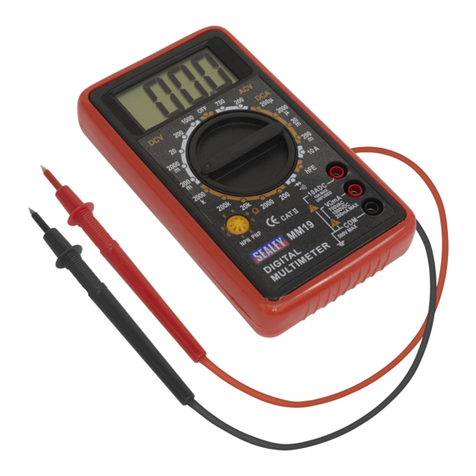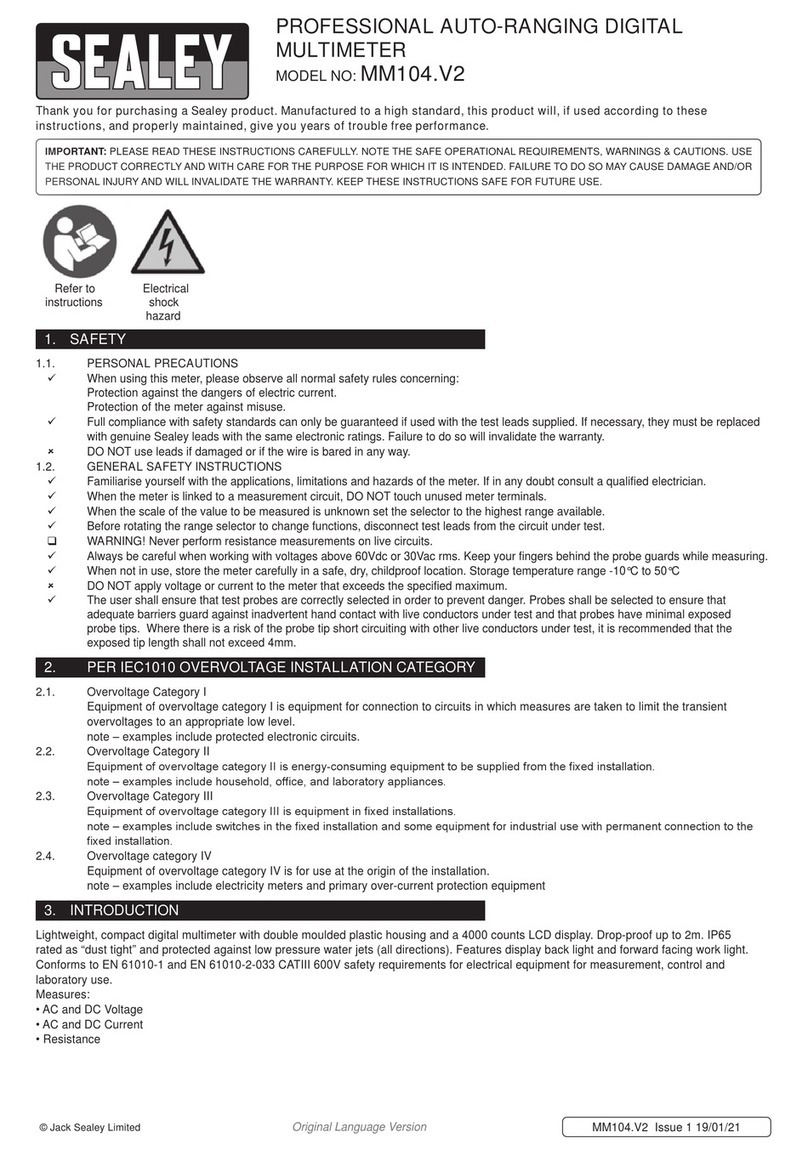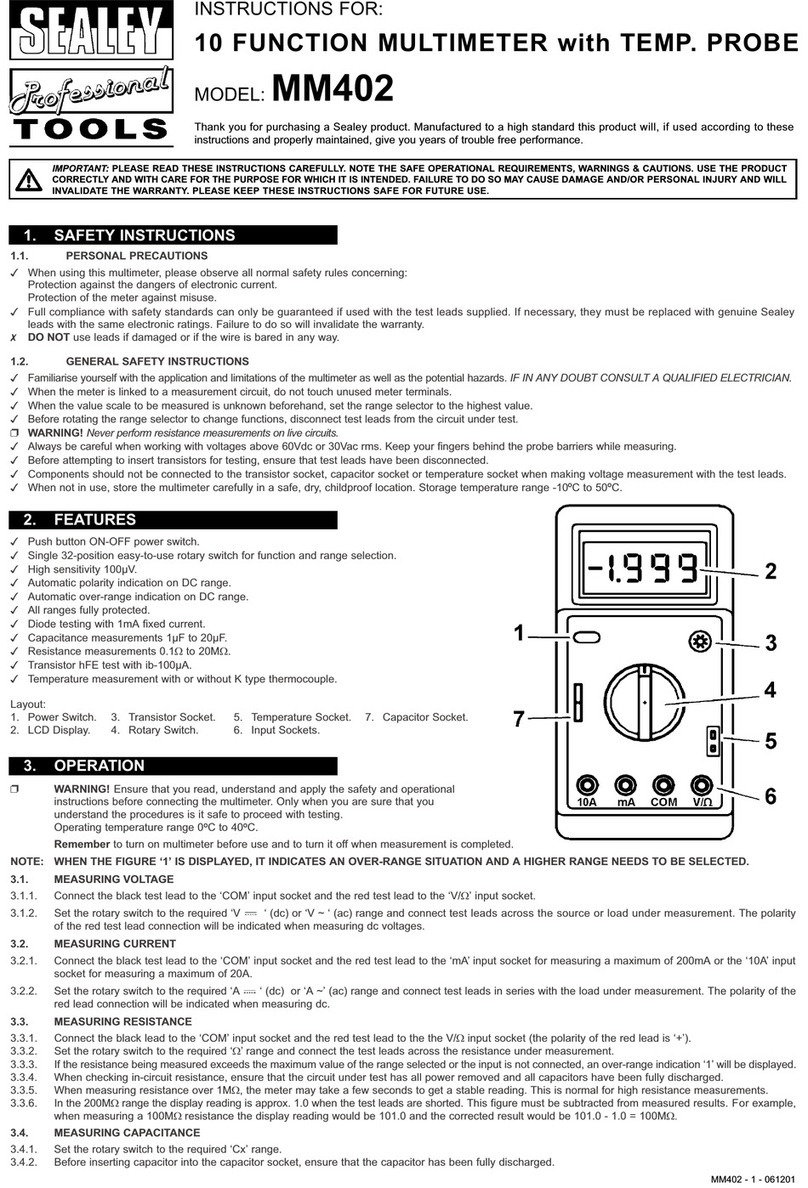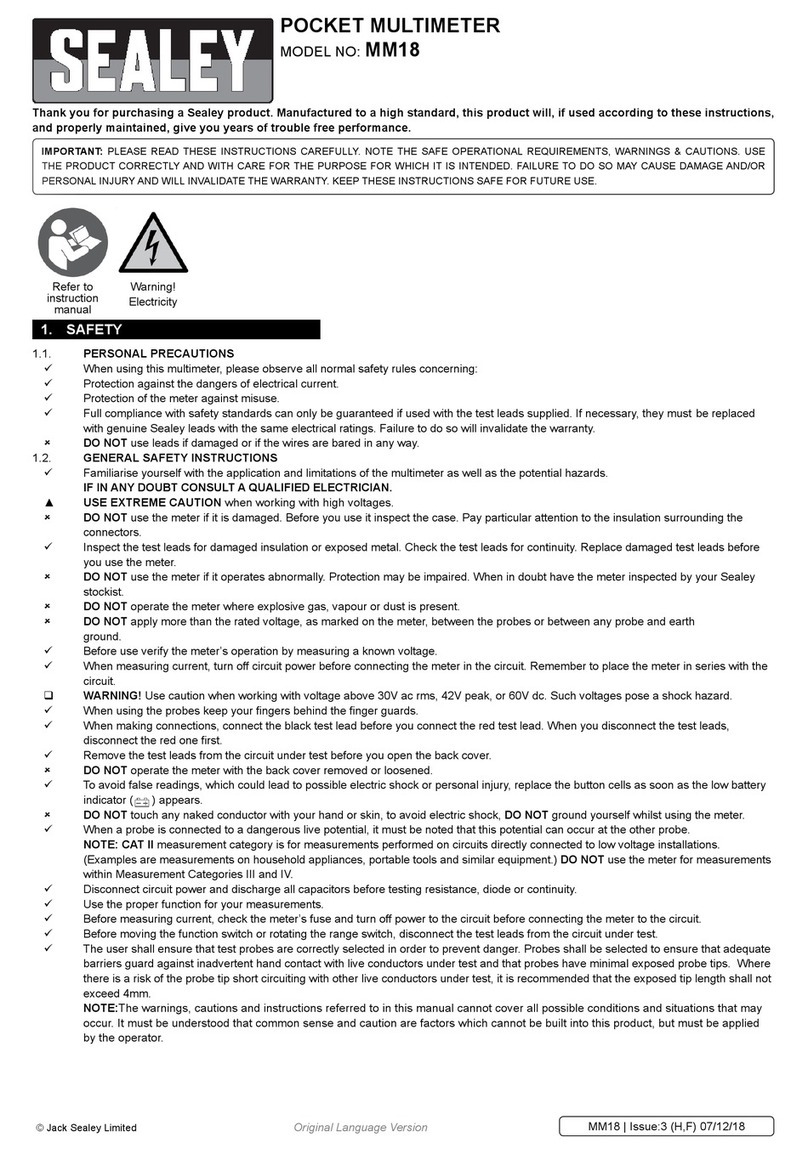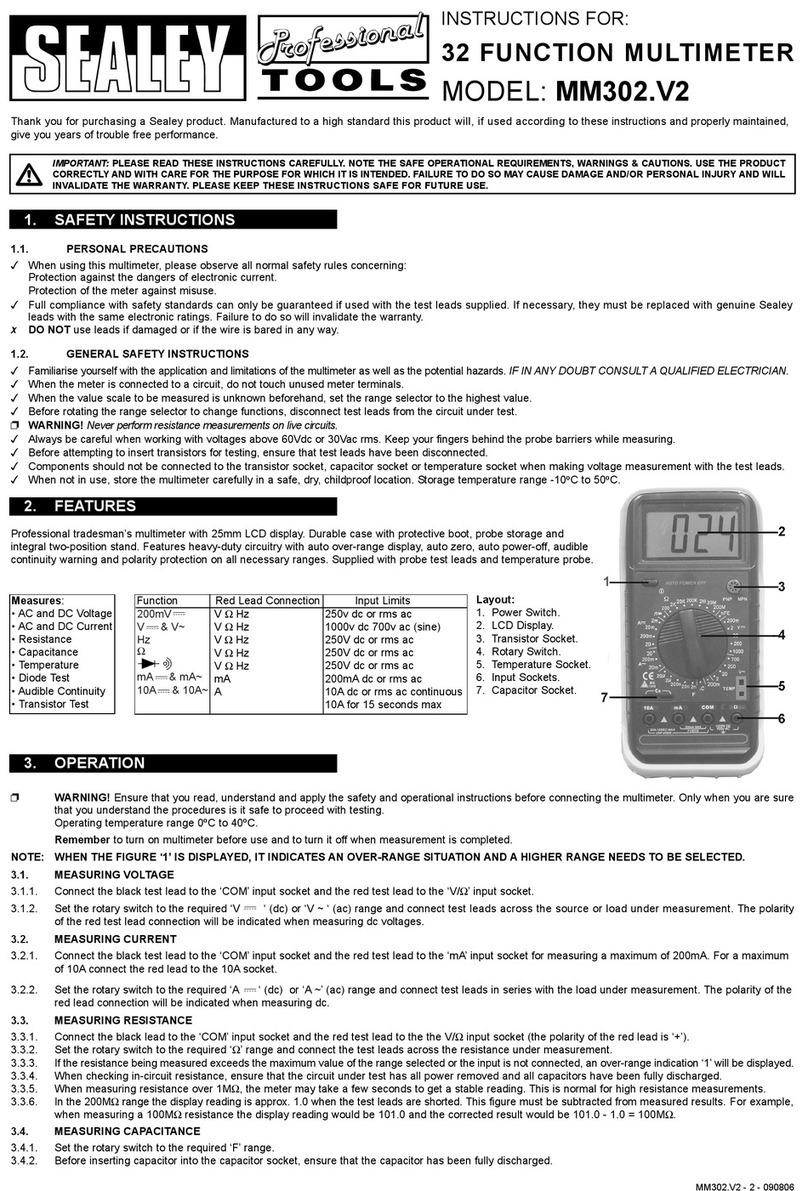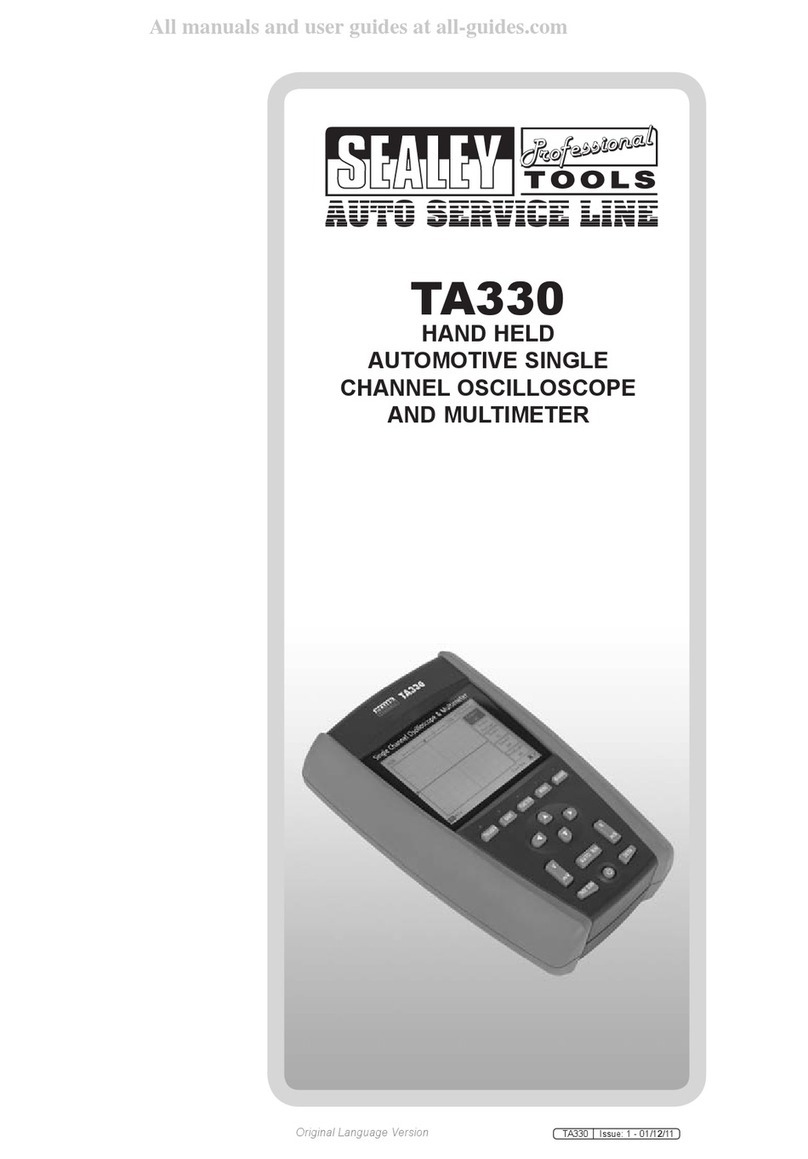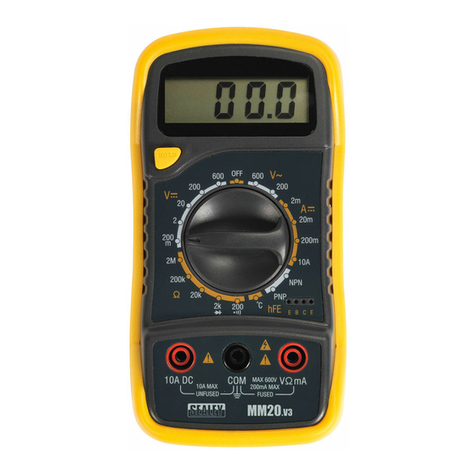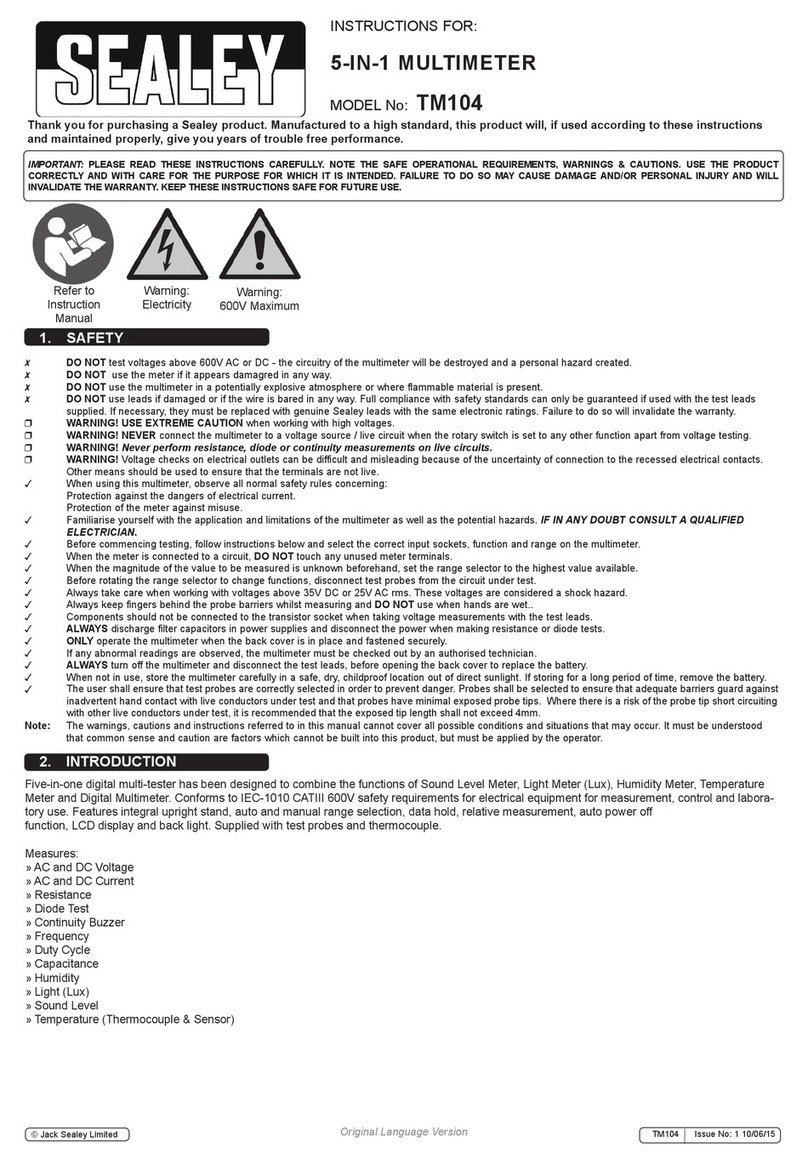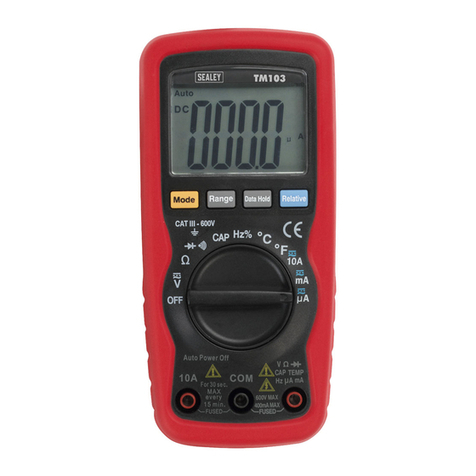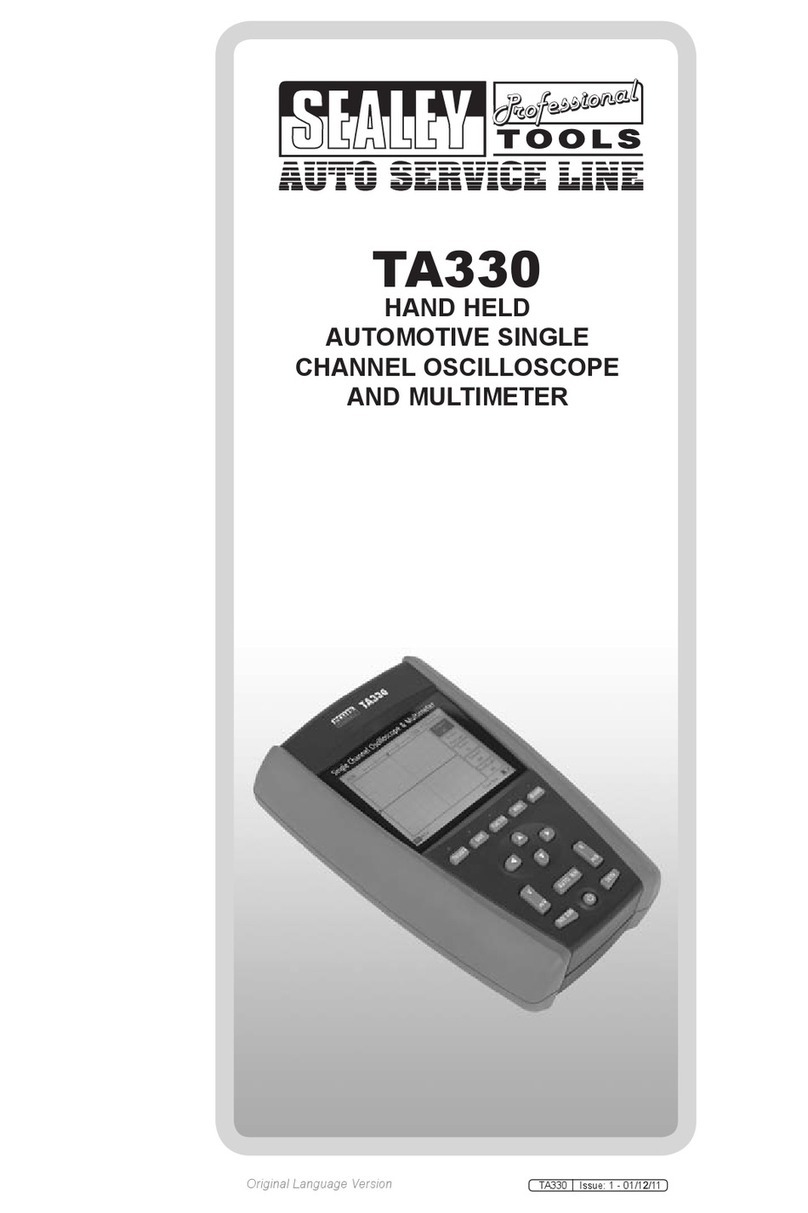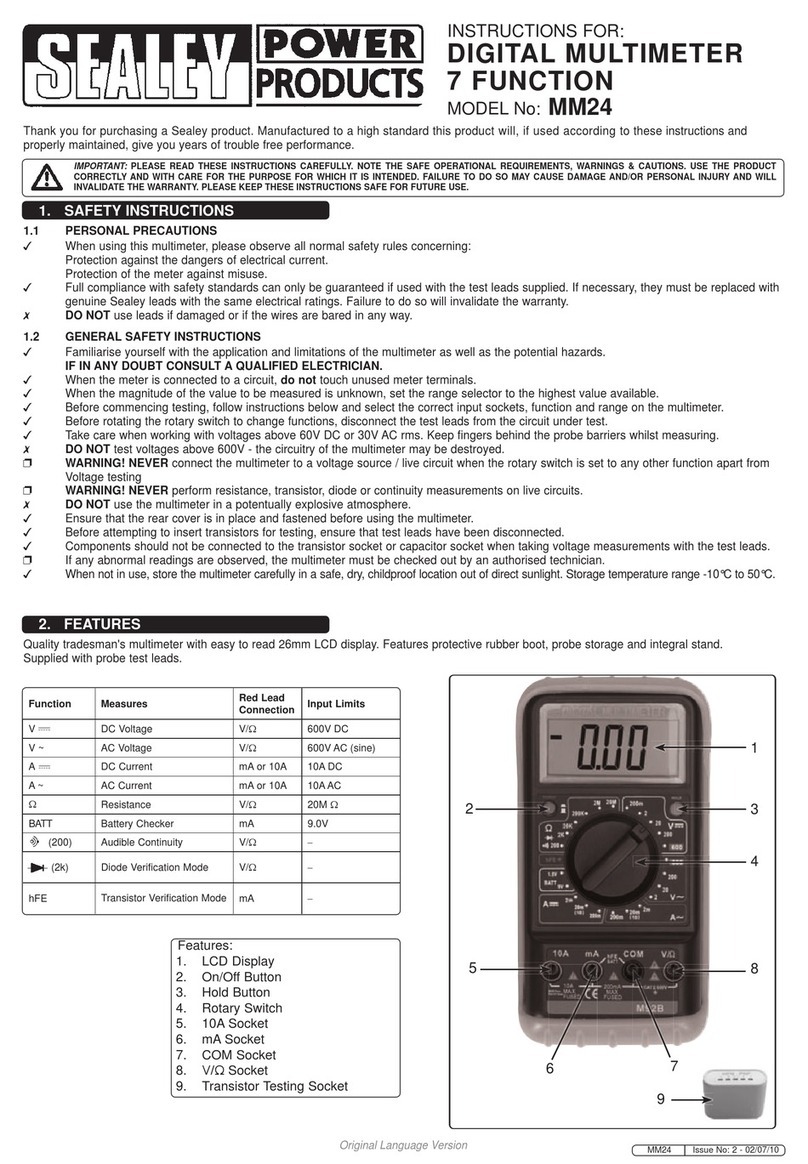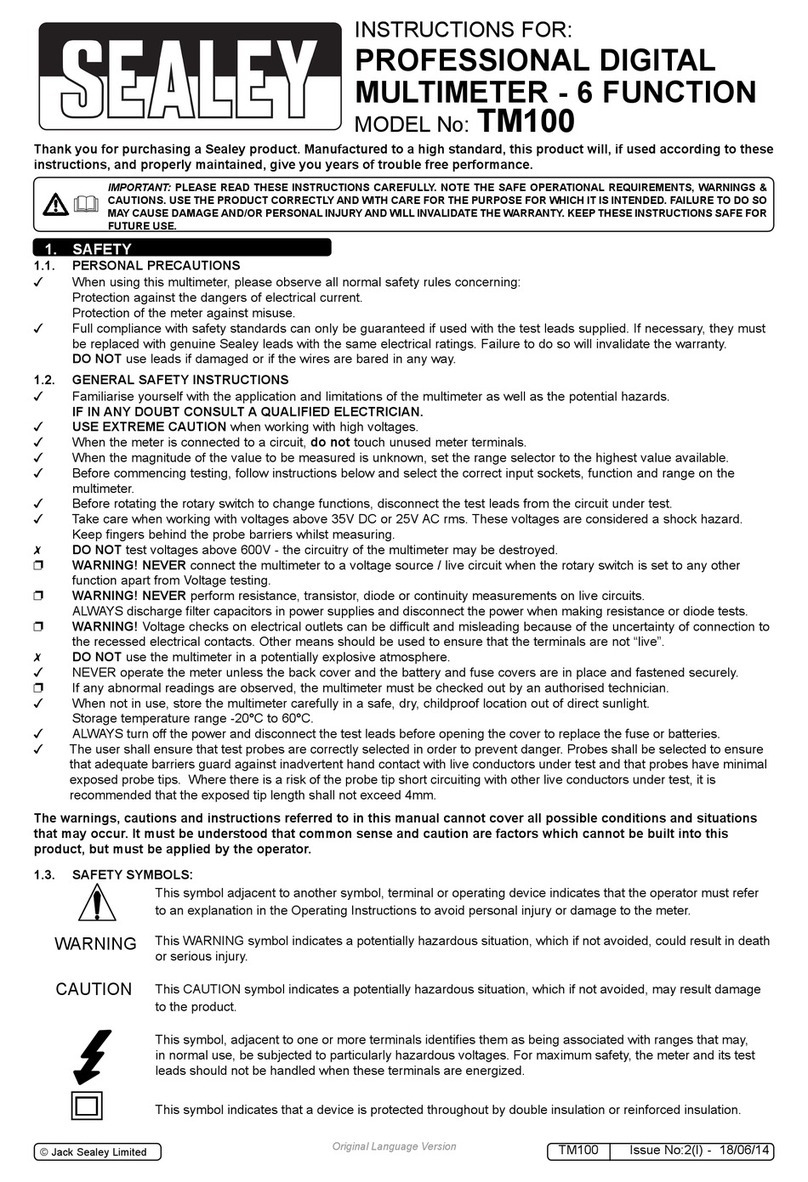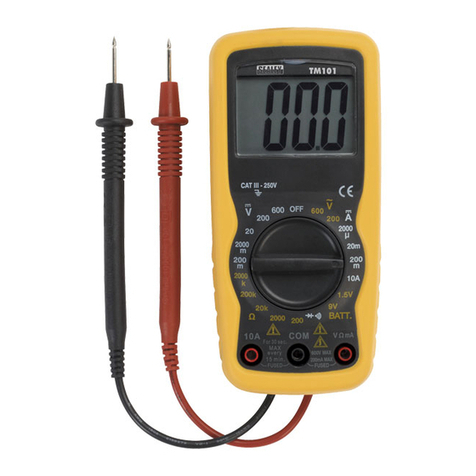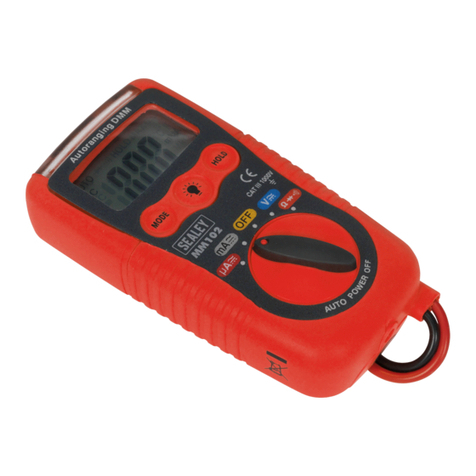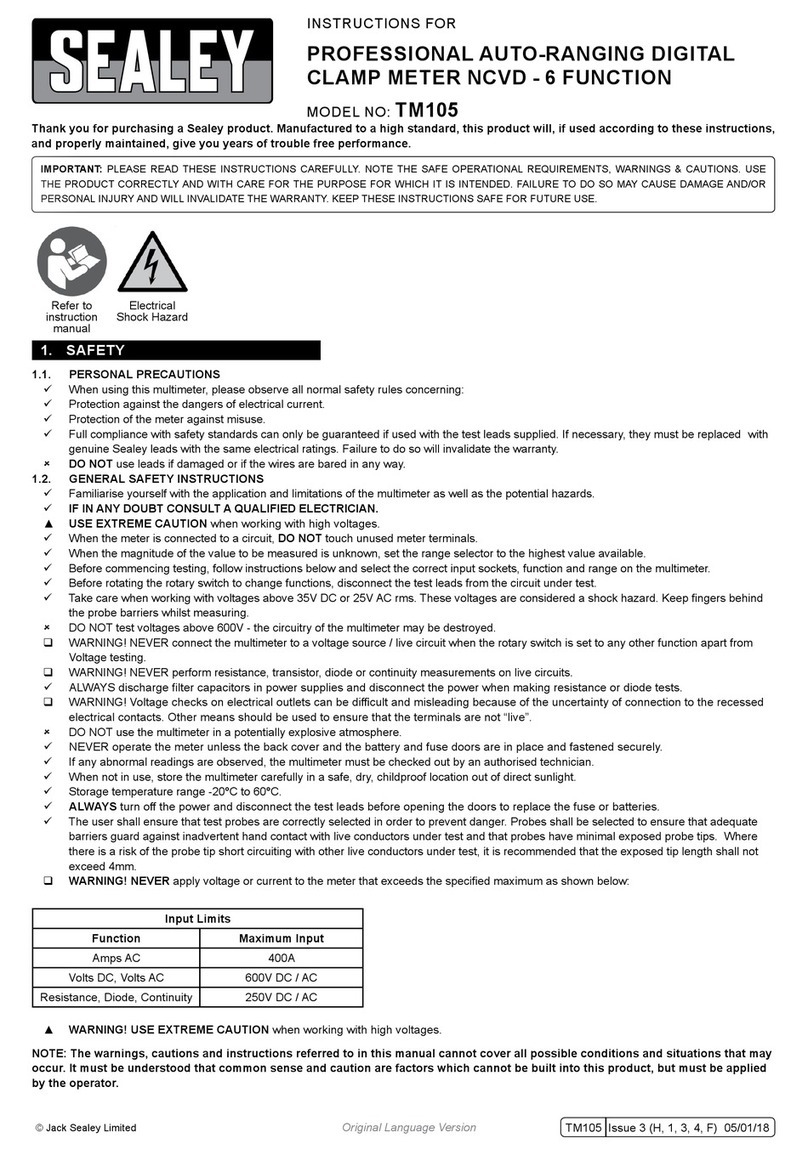
3. SPECIFICATION
Overvoltage Category: ..................................................................................................................... CAT11 1000V.
Display:......................................................................................4000 counts LCD display with function indication.
Polarity: .................................................................................................Automatic, (-) negative polarity indication.
Overrange: .............................................................................................................................“OL” mark indication.
Low Battery Indication: ............The “BAT” is displayed when the battery voltage drops below the operating level.
Measurement Rate:.....................................................................................................2 times per second nominal
Auto Power Off: .......................................... Meter automatically shuts down after approx 30 minutes of inactivity.
Operating environment:...................................................... 0°C to 50°C (32° to 122°F) at < 70%relative humidity.
Storage Temperature:....................................................... -20° to 60°C (-4°F to 140°F) at <80% relative humidity.
For Inside Use:
Max Working Height: ................................................................................................................................2000mtr.
Power: ....................................................................................................................................One 9V battery PP3.
Dimensions:...............................................................................................................195 (H) x 92 (W) x36 (D) mm
Approx Weight:................................................................................................................................................360g
Accuracy is given at 18°C to 28°C (65°F to 83°F) less than 70% relative humidity.
Range Resolution Accuracy
400.0mV 0.1mV ± 0.5% of reading ± 2 digits
4.000V 1mV
40.00V 10mV ±1.5% of reading ± 2 digits
400.0V 100mV
1000V 1V ± 1.8% of reading ± 2 digits
Range Resolution Accuracy
400.0mV 0.1mV ± 1.5% of reading ± 30 digits
4.000V 1mV ± 1.0% of reading ± 3 digits
40.00V 10mV ± 1.5% of reading ± 3 digits
400.0V 100mV
700V 1V ± 2.0% of reading ± 2 digits
Range Resolution Accuracy
400.0uA 0.1uA ± 1.0% of reading ± 3 digits
4000uA 1uA
40.00mA 10uA ± 1.5% of reading ± 3 digits
400.0mA 100uA
4A 1mA ± 2.5% of reading ± 5 digits
20A 10mA
Range Resolution Accuracy
400.0Ω 0.1Ω ± 1.2% of reading ± 4 digits
4.000kΩ 1Ω ± 1.0% of reading ± 2 digits
40.00kΩ 10Ω ± 1.2% of reading ± 2 digits
400.0kΩ 100Ω
4.000MΩ 1kΩ
40.00MΩ 10kΩ ± 2.0% of reading ± 3 digits
Range Resolution Accuracy
400.0uA 0.1uA ± 1.5% of reading ± 5 digits
4000uA 1uA
40.00mA 10uA
400.0mA 100uA
4A 1mA ± 3.0% of reading ± 7 digits
20A 10mA
DC Voltage (Auto Ranging)
AC Voltage (Auto Ranging except 400mV)
Input Impedance: 10MΩ.
Maximum Input 700Vac rms or 1000Vdc.
DC Current (Auto Ranging for uA and mA)
Input Impedance: 10MΩ.
Frequency Range: 50 to 400Hz.
Maximum Input: 700Vac rms or 100Vdc.
Overload Protection: 0.5A/250V and 20A/250V
Fuse:
Maximum Input:400mAac rms or 400mAdc on uA/mA ranges
20A ac or dc rms on 10A range.
AC Current (Auto Ranging for uA and mA)
Overload Protection: 0.5A/250V and 20A/250V
Fuse:
Frequency Range:50 to 400Hz
Maximum Input: 40mA ac rms or 400mA dc on uA/m7
20A ac or dc rms on 20A range.
Resistance (Auto Ranging)
Range Resolution Accuracy
40.00nF 10pF ± 5.0% of reading ± 7 digits
400.0nF 0.1nF
4.000uF 1nF ± 3.0% of reading ± 5 digits
40.00uF 10nF
100.0uF 0.1uF ± 5.0% of reading ± 5 digits
Capacitance (Auto Ranging)
Input Protection: 250Vac rms or 250Vdc.
Input Protection: 250Vac rms or 250Vdc.
Range Resolution Accuracy
5Hz 0.001Hz
50Hz 0.01Hz ± 1.5% of reading ± 5 digits
500Hz 0.1Hz
5kHz 1Hz
50kHz 10Hz ± 1.2% of reading ± 3 digits
500kHz 100Hz
10MHz 1kHz ± 1.5% of reading ± 4 digits
Frequency (Auto Ranging)
Sensitivity: <0.5V RMS while <1MHz
Sensitivity: >3V rms while >1MHz
Overload Protection: 250Vac rms or dc.
Range Resolution Accuracy
0.1%~99.9% 0.1% ± 1.2% of reading ± 2 digits
Duty Cycle (Auto Ranging)
Pulse Width: >100us, <100ms
Frequency Width: 5Hz - 150kHz
Overload Protection: 250Vac rms or dc.
Range Resolution Accuracy
1.0~10.0ms 0.1ms ± 3% of reading ± 10 digits
Pulse Width
Overload Protection: 250Vac rms or dc.
Range Resolution Accuracy
-20°C~+760°C 1°C ± 3.0% of reading ± 3 digits
-4°F~+1400°F 1°F (Meter only, probe accuracy
not included).
Range Resolution Accuracy
RPM 4 600~4000RPM 1RPM
600~1200RPM 10RPM
(X 10PM) ±2% of rdg ± 4 digits
RPM 2 300~4000 RPM 1RPM
300~600RPM 10RPM
(x 10RPM)
Temperature
Sensor: Type K Thermocouple
Range Resolution Accuracy
0.3mA 1mV ± 10% of reading ±5 digits
typical
Diode test
Open Circuit Voltage: 1.5Vdc typical
Overload Protection: 250Vac rms or dc.
Cylinder Range Resolution Accuracy
4CYL 0~90.0° 0.1° ± 2.0% of reading ± 4 digits
5CYL 0~72.0°
6CYL 0~60.0°
8CYL 0~45.0°
Dwell Angle
Overload Protection: 250Vac rms or dc.
Effect Reading: >600RPM
RPM (Tach)
Audible Continuity
Audible threshold: Less than 150Ω
Test Current: <0.3mA
Overload Protection: 250Vac rms or dc.
Original Language Version
© Jack Sealey Limited TA202 Issue 5 (-6) 20/09/18
